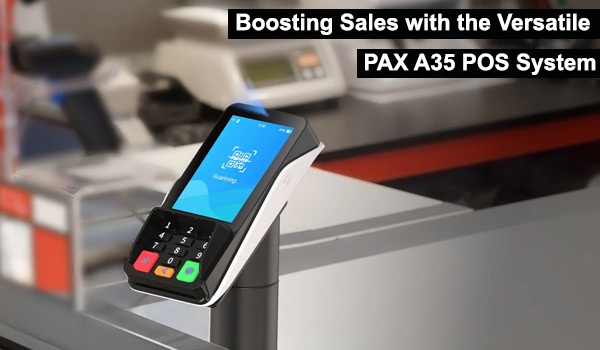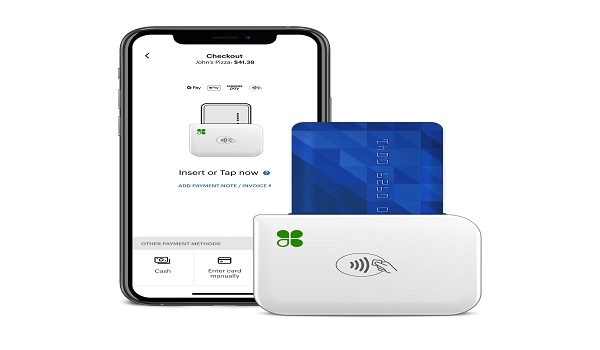
Understanding the Interchange Program: Definition and Basics
The interchange program is a crucial component of the payment ecosystem, defining the process and fees associated with the exchange of funds between acquiring and issuing banks during credit and debit card transactions. It serves as the mechanism that facilitates seamless electronic payments between merchants and consumers.
Basics of Interchange Fee Structure
The interchange fee structure comprises several components, each playing a specific role in the overall transaction cost.
- Interchange Fee: This is the primary fee paid by acquirers (merchants' banks) to issuers (cardholders' banks) for each transaction. It is set by card networks (e.g., Visa, Mastercard) and represents a percentage of the transaction value plus a flat fee.
- Percentage Component: Typically, interchange fees include a percentage of the transaction amount. Different card types (debit, credit, premium) may have varying percentage rates.
- Flat Fee Component: In addition to the percentage, a fixed amount (flat fee) is charged for each transaction, irrespective of the transaction value.
- Assessment Fees: Apart from interchange fees, card networks charge assessment fees for using their payment infrastructure. These fees contribute to the maintenance and development of the network.
- Issuer Fees: Issuing banks may impose additional fees related to transaction processing and customer account maintenance. These fees contribute to covering the costs associated with issuing and managing payment cards.
The Role of Card Networks and Issuing Banks
Card Networks
- Facilitators of Transactions: Card networks act as intermediaries, facilitating transactions between merchants and consumers. They set the rules, standards, and interchange fees that govern transactions conducted through their payment network.
- Standardization: Card networks ensure uniformity and standardization in payment processes, allowing seamless transactions across a global network of merchants and financial institutions.
- Security and Authorization: They play a crucial role in ensuring the security of transactions by implementing robust authorization and authentication processes, reducing the risk of fraud.
Issuing Banks
- Card Issuance: Issuing banks are responsible for issuing payment cards to consumers. These cards are linked to the cardholder's account and enable them to make purchases or withdraw cash.
- Transaction Authorization: Issuers play a vital role in authorizing transactions in real time. They assess the cardholder's account status, credit limit, and other factors to approve or decline a transaction.
- Receipt of Interchange Fees: Issuing banks receive interchange fees as compensation for the risks and costs associated with providing credit and managing cardholder accounts.
Importance in Merchant Services
How Interchange Fees Impact Revenue
Cost of Doing Business
- Transactional Overhead: Interchange fees constitute a significant portion of the transactional overhead that merchants incur for accepting card payments. As such, understanding and managing these fees are crucial for maintaining healthy profit margins.
Direct Impact on Profitability
- Profit Margins: The interchange fee directly influences the profit margins of merchants. Higher interchange rates translate into increased transaction costs, potentially reducing the overall profitability of each sale.
- Competitive Pricing: Managing interchange fees allows merchants to strategically price their products or services in the market. A thorough understanding of these fees enables businesses to remain competitive without compromising profitability.
Influence on Pricing Strategies
- Pricing Adjustments: Merchants often factor interchange fees into their pricing strategies. Awareness of these fees empowers businesses to make informed decisions about adjusting prices, offering discounts, or implementing cash discount programs to offset transaction costs.
- Promotions and Loyalty Programs: Interchange fees play a role in shaping the feasibility of promotions and loyalty programs. Merchants can tailor these initiatives to maintain customer satisfaction without eroding profits.
Relationship Between Interchange Rates and Merchant Costs
Direct Cost Implications
- Transactional Costs: Interchange rates directly contribute to the transactional costs borne by merchants for processing card payments. Higher interchange rates increase the expenses associated with each transaction, impacting the overall cost structure.
Negotiating Merchant Agreements
- Contract Negotiations: Merchants negotiating agreements with payment processors and acquiring banks must consider interchange rates. Skillful negotiation can result in more favorable terms, potentially lowering the overall costs of card transactions.
- Customized Fee Structures: Understanding interchange rates allows merchants to advocate for customized fee structures based on their business model, transaction volume, and average transaction value.
Technology and Efficiency Investments
- Investments in Point-of-Sale (POS) Systems: Merchants can leverage technology, including advanced POS systems, to streamline transactions and qualify for lower interchange rates. Investments in technology that enhance efficiency may contribute to cost savings.
- Data Analytics for Cost Management: Employing data analytics enables merchants to analyze transaction patterns and identify opportunities to optimize interchange costs. This strategic use of data can lead to more efficient cost management.
Impact on Customer Experience
- Balancing Customer Convenience and Costs: Merchants must strike a balance between providing a seamless customer experience and managing costs. Understanding the relationship between interchange rates and costs allows businesses to implement strategies that prioritize both customer satisfaction and financial sustainability.
Key Components of a Profitable Interchange Program: Optimizing Card Acceptance
Balancing Acceptance of High and Low Interchange Cards:
Understanding Card Types
- Categorizing Card Types: Cards come in various types, such as debit, credit, and premium cards. Each type carries a different interchange rate. Understanding these distinctions is essential for merchants to optimize their acceptance strategy.
- Evaluating Interchange Costs: Merchants need to assess the interchange costs associated with each card type. Balancing the acceptance of high and low interchange cards involves strategically choosing which card types to prioritize based on associated costs and customer preferences.
Strategic Acceptance Policies
- Segmenting Customer Base: Merchants can segment their customer base to tailor acceptance policies. For example, they are offering incentives for customers to use lower interchange cards or implementing restrictions on high interchange card acceptance during specific promotions.
- Aligning Acceptance with Business Goals: Businesses can align card acceptance policies with their strategic goals. This might involve encouraging the use of lower interchange cards to minimize costs or prioritizing premium cards for high-end products to enhance customer experience.
Data-Driven Insights
- Customer Behavior Analysis: Utilize data analytics to analyze customer behavior. Understand which cards customers prefer to use and when. Tailoring acceptance policies based on actual customer behavior ensures alignment with market trends and customer preferences.
- Seasonal Adjustments: Adjust acceptance policies seasonally or during peak periods. For instance, during promotions or holidays, merchants might encourage the use of specific cards to capitalize on promotional benefits or lower interchange rates.
Customer Engagement and Education
- Educating Customers: Merchants can actively educate customers about the benefits of using cards with lower interchange rates. This can be done through promotional campaigns, signage, or loyalty programs to incentivize preferred card usage.
- Customizing Loyalty Programs: Loyalty programs can be tailored to encourage specific card usage. Offering additional rewards or discounts for using cards with lower interchange rates can influence customer behavior positively.
Key Components of a Profitable Interchange Program: Negotiating Interchange Rates
Strategies for Negotiating Favorable Rates:
Understanding Market Dynamics
- Market Research: Merchants need to conduct thorough market research to understand prevailing interchange rates in their industry. This knowledge provides a benchmark for negotiations and helps businesses make informed decisions during rate discussions.
- Competitor Analysis: Analyzing the interchange rates offered by competitors allows merchants to position themselves competitively. It provides leverage during negotiations by showcasing industry standards and the merchant's willingness to switch providers for better terms.
Leveraging Transaction Volume for Better Terms
Volume-Based Negotiations:
- Highlighting Transaction Volume: Merchants with high transaction volumes have negotiation leverage. By emphasizing the volume of transactions they bring to the payment processor, businesses can negotiate for lower interchange rates or preferential terms.
- Long-Term Commitments: Negotiating long-term commitments, such as multi-year contracts, can strengthen the bargaining position. Payment processors may offer more favorable rates in exchange for the predictability and stability that come with long-term partnerships.
Key Components of a Profitable Interchange Program: Utilizing Technology for Optimization
Implementing Point-of-Sale (POS) Systems that Enhance Interchange Efficiency:
Smart Terminal Solutions
- Integration of Smart Terminals: Modern POS systems and smart terminals can be integrated to recognize and process transactions based on interchange rates. Merchants can program their systems to prioritize low interchange cards or dynamically adjust based on business rules.
- Contactless and Mobile Payments: Implementing contactless and mobile payment options can enhance efficiency and provide opportunities for negotiation. Certain payment methods may qualify for lower interchange rates, and offering these options can be a win-win for both merchants and customers.
Incorporating Data Analytics to Identify Cost-Saving Opportunities
Transaction Data Analysis
- Granular Transaction Analysis: Employ advanced analytics to conduct a granular analysis of transaction data. Identify patterns related to card types, transaction amounts, and timing to uncover opportunities for optimizing interchange costs.
- Predictive Analytics: Utilize predictive analytics to forecast future transaction trends. This allows merchants to proactively adjust acceptance policies and negotiate better rates based on anticipated changes in customer behavior or market dynamics.
Real-Time Monitoring
- Real-Time Monitoring Systems: Implement real-time monitoring systems that provide insights into transaction costs as they occur. This empowers merchants to make immediate adjustments to optimize interchange efficiency and minimize costs.
Conclusion
In the competitive realm of merchant services, an efficient interchange program stands as a linchpin for maximizing profitability. By understanding the nuances of interchange fees, negotiating favorable terms, leveraging technology, and staying vigilant in compliance and risk management, businesses can navigate the complexities of the payment ecosystem to achieve sustained financial success. Embracing these strategies ensures that merchants not only minimize costs but also enhance their overall profitability in an ever-evolving market.









